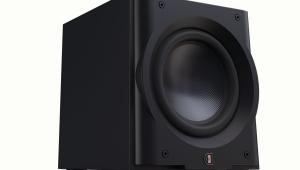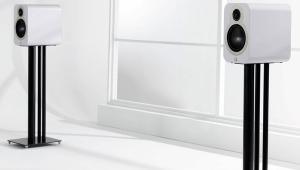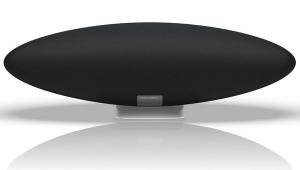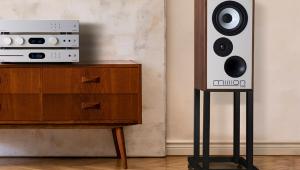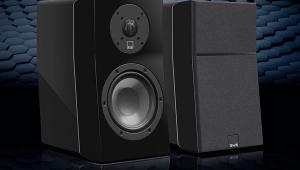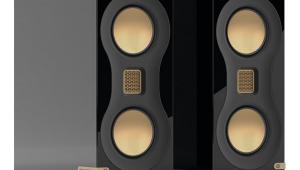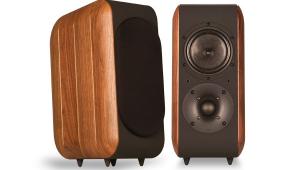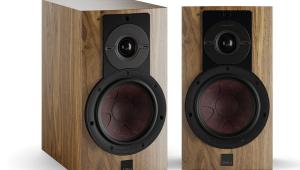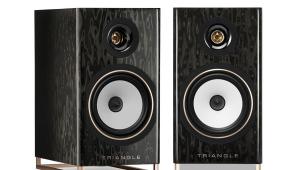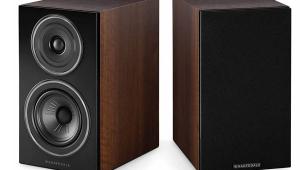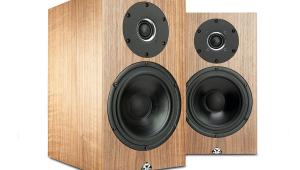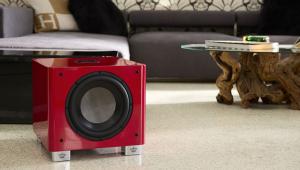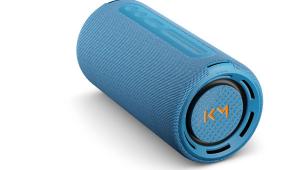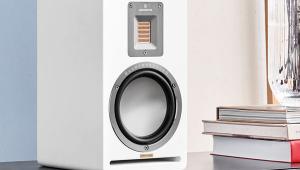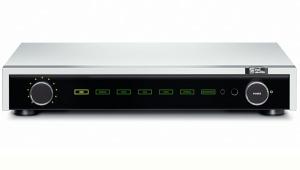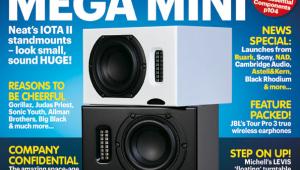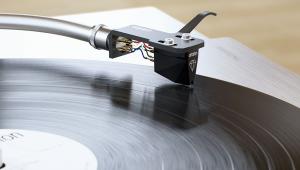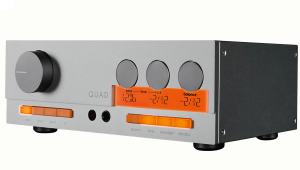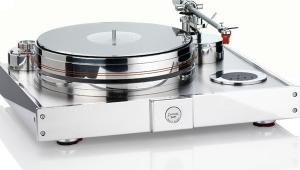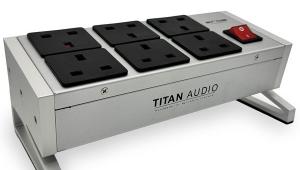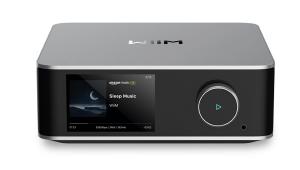Acoustic Energy, Reference 1 - £1,500
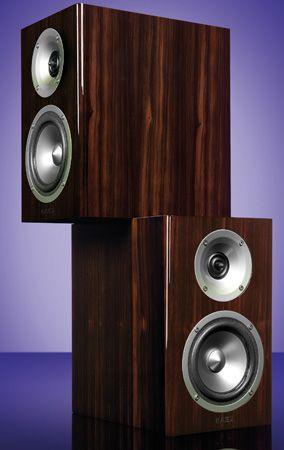
Back in 1988, Acoustic Energy made a very impressive debut with its original AE1, a small Proaudio-oriented speaker that, at the time, essentially re-invented the concept of the modern highperformance miniature.
The company has undergone numerous changes since then. Its original founders have long since moved on and the company is currently owned by Malaysian interests, which also provides a source for inexpensive production.
The perennial AE1The AE1 and a number of variations on its theme have been reviewed in Hi-Fi Choice on a pretty regular basis down the years. The most recent of these was the AE1 MkIII, which was the Blind-listening Group Test winner in HFC 337, while this new AE Reference 1 shares a number of features with that model.
The good news is that the £1,500 per pair Reference 1 is considerably less expensive than the standard MkIII that we reviewed (at £2,000 per pair). Indeed, the MkIII has since undergone some changes: it now carries an SE suffix; costs £2,500, has an upgraded crossover network and comes in a wide range of colours, so the two versions are now significantly further apart pricewise.
Constrained layer dampingThe drive units of both versions look very similar and the cabinet is much the same size, too, but the enclosure engineering is handled very differently in this model, presumably to keep costs under control.
One could speculate that this might have compromised the performance of the less costly model, but that hardly seems to be the case. Admittedly there’s no longer a metal-alloy panel to reinforce the front baffle and steel plates are not used to damp the internal panels either. But the alternative approach adopted here, which involves a double-skin enclosure with constrained layer damping between the two layers, seems to be equally effective.
In fact, the whole enclosure here is constructed using 3mm of high density rubber sandwiched between 7mm and 5mm layers of MDF. The innermost layer takes the fi rst ‘hit’ from the acoustic energy generated off the back of the bass/mid driver’s cone and because it’s quite thin, it is bound to vibrate, but these vibrations are then effectively absorbed by the rubber jacket and are, therefore, unlikely to penetrate to the outer layer and cause coloration.
However the enclosure is constructed under the surface, the skin itself is arguably the most important element for the customer. The Reference 1 comes beautifully dressed in an utterly delightful looking ebony veneer, which is then heavily lacquered to give a lovely high-gloss finish. There are no alternative finishes available for this model, but it’s hard to see how anyone would want anything different.
Driver line-upThe driver line-up looks very like that used in the MkIII. The small metal cone bass/mid drive unit, with its integral and characteristically pointy dust cover, looks very like the original AE1 unit, but, in fact, has a deep-anodised hyperbolic-shaped alloy cone that’s significantly thinner (and therefore lighter) than the original. The motor has a long gap operating on a short coil for superior linearity under high excursion (at some cost in sensitivity), while the double aluminium voice coil is thermally bonded to the cone in order to aid heat dissipation.
Specifying the size of a cone drive unit is the source of some confusion within the industry. Acoustic Energy calls this a 110mm unit, though the industry consensus would probably go for 130mm, which is the diameter across the inside of the cast alloy frame (corresponding to cone plus surround). To avoid such confusion we measure the diameter of the cone itself, which in this case is 95mm.
The tweeter follows the MkIII in adopting a Vifa-sourced fabric double-annulus ‘ring radiator’ device, a highly regarded unit, but one that certainly represents a significant break with the original AE1’s traditional metal dome. Unlike the MkIII, however, the Reference 1’s tweeter is loaded by the DXT developed lens, first seen in the Radiance series, which uses calculated and shaped concentric rings to maintain a consistent dispersion and power response through the tweeter’s operating range and a good match to the midrange through the crossover region.
A single pair of good-quality WBT multi-way socket/binder terminals feed a relatively simple 2nd/3rd order hard-wired crossover network with just six components, mounted on MDF board. Ingredients include OFC copper internal wiring, laminate-core chokes and auto-transformer matching to avoid resistors.
The close similarity between the Reference 1 and the highly regarded MkIII extends very much to the sound quality of the two models. Both are best kept well clear of walls, and even at these locations suffer from some mid-bass excess under our room conditions (which is particularly interesting, since that wasn’t at all the case with an AE1 Signature model that Hi-Fi Choice reviewed way back in 1995).
Both show very high standards of neutrality and low coloration, alongside relatively modest midband sensitivity. There’s a remarkable freedom from one form of enclosure coloration here, too, though the phrase ‘one form of enclosure coloration’ requires some explanation.
There are actually two distinct types of enclosure coloration. One is created by the spurious vibrations in the enclosure panels, which might be small in amplitude, but are generated by a much larger surface area than the drive units. Here the Reference 1’s advanced enclosure engineering is wholly effective and successful.
Wide dynamic rangeEven if its high points of dynamic expression do seem a mite modest, the best feature of the Reference 1 is arguably its exceptionally low ‘noise’ or ‘hash’ fl oor, which means that the sounds created by the speaker emerge from a truly silent background. Low-level resolution and overall coherence are both very good, which ensures an exceedingly wide dynamic range, as well as precise, spacious and well-focused stereo images.
Although the bass ‘thump’ is just occasionally audible with some material, especially when the volume is turned up high, in practice it did little harm because this inherently very ‘clean’ speaker is mounted well clear of the fl oor (on Partington Dreadnought stands). Indeed, most of the time, it merely added a rather welcome impression of weight and gravitas to the proceedings.
Taking both sound quality and presentation into account, the AE Reference 1 looks a very attractive and effective proposition. The alloy baffle and superior crossover ingredients probably give the AE1 MkIII SE a modest performance advantage, but the Reference 1 looks a tempting prospect at £1,500, with its fine neutrality, low coloration and wide dynamic range.
LIKE: Superb presentation and notably wide dynamic range
DISLIKE: Bass can get thumpy at times; midband sensitivity is quite low
WE SAY: Fine mid-to-treble neutrality and coherence, plus wide dynamic range, but sensitivity is below par
DETAILS
PRODUCT:
Acoustic Energy
Reference 1
ORIGIN:
UK/Malaysia
TYPE:
Standmount twoway
loudspeaker
WEIGHT:
11kg
DIMENSIONS:
(WxHxD)
190x310x280mm
FEATURES:
• Reflex bass loading via rear port
• Vifa doubleannulus ringradiator tweeter with DXT lens
• 130mm bass/mid driver with underhung magnet and twin voice coil
• One pair of multiway terminals
• 2kHz 2nd/3rd order hardwired crossover
• Ebony wood with piano lacquer high glossfinish
DISTRIBUTOR:
Acoustic Energy
TELEPHONE:
01285 654432
WEBSITE:
acoustic-energy.co.uk
 |
Inside this month's issue:
Ruark R610 music system and Sabre-R standmount speakers, PMC twenty.23i Active, floorstanders, English Acoustics Downton preamplifier, Bluesound NODE ICON preamp/streamer, Ortofon Concorde Music Blue MM cartridge and much, much more
|
